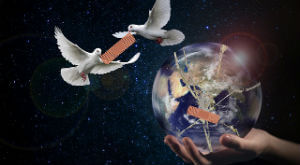
Planet Earth is facing a crisis. The demands on Mother Nature continue to grow, putting a strain on resources as the global economy continues to raise supply demand. Yet there is hope. Life without some of the energy resources that we currently have in our lives is possible, but also necessary.
Currently, most of the energy produced in the world is from fossil fuels, which require millions of years to form and are non-renewable. Work has already begun on sustainable development, a process that aims not to damage the environment, considering the needs of future generations.
Transport
The growing number of cars, vans and lorries on the roads are increasing carbon emissions at a faster rate than any other sector, with 70 million new cars built each year. Car-sharing, walking-buses to get children to school and cycle lanes to encourage cyclists are enticing more of us out of our cars to get around. Taking a vacation, without needing to take a flight can also improve an individual’s carbon footprint.
Electricity
Like transport, electricity is a source of harm to the environment, and yet most of us do not give it a second thought because it is not something we can touch, it is just always “there” for most of us. Yet the majority of electricity is produced from fossil fuels and nuclear power plants. Turning off all devices instead of leaving them on standby; turning down the thermostat by one or more degrees; wearing a jumper instead of turning up the heating, will all make a difference.
Buildings
Green buildings use the available natural resources like the solar energy and wind energy to its fullest. Windows are double or triple-glazed, tinted to keep rooms cool in summer. With the right location and orientation in the building design, windows can be adjusted to get maximum natural lighting, and to optimal air circulation in the building. Insulating roof spaces, keeping doors closed to retain heat and growing our own food in our gardens are all ways to love our planet by reducing emissions.
